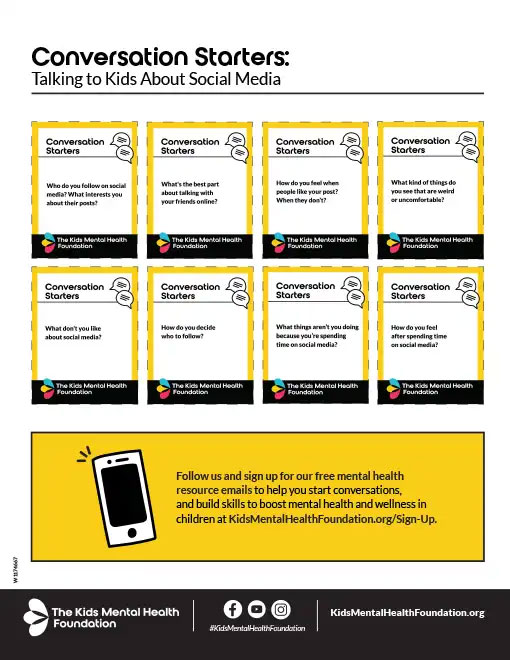- For healthy social media use, involve the whole family and discuss online habits and safety.
- Talk about risks (like bullying), set rules for what kinds of interactions are OK and discuss how to keep personal information safe.
- Set limits and agree on consequences. You’ll want to check-in regularly on how the plan is working for your family.
Talking to Kids about Social Media
Article Summary
- Building a strong relationship with your child helps reduce online risks and can improve their digital literacy.
- Letting your child guide you through the platforms they use while expressing curiosity can encourage more sharing.
- Spending time alongside your child when they’re online and seeing their favorite content will help you understand what they’re seeing and thinking about.
One of the best ways to reduce the risks kids face online and through social media is a strong relationship with you.
When you build trust and keep conversations open, you can work in partnership with your child to help them get the benefits of connecting online, while also improving their digital literacy and safety.
Exploring Social Media Platforms
What’s the best way to learn about kids and social media?
Ask a kid!
Kids are experts when it comes to navigating the newest social media platforms and trends. Let them serve as your guide.
Keep enthusiasm and curiosity at the center. Social media isn’t always good or always bad for mental health. You’ll first need to gather information about how your kids are using it in their lives and it may be different for each kid. Set aside judgment and prepare to manage any initial reactions you might have.
Sit and Watch
Next, ask to sit alongside them as they spend time on their preferred social media platforms. It may feel awkward, and you might not get the lingo just right. That’s OK – it’s all part of learning.
- Ask them to show you their favorite video, channel or online influencer.
- Ask about the funniest memes going around their friend group.
- See if they’ll share the most inspiring thing they saw online (or the silliest, or the scariest).
Pay attention to their explore pages or what the algorithm suggests they watch next. These platforms are created to show kids more of what they want to see. If you see content that is about alarming topics, that can be an indication your child or their peers are engaging and interested in that topic.
Lead with open-ended questions
Your goal is to start a conversation in a way that feels comfortable and safe. Be open-minded and curious when you ask things like, “Who do you follow and why? How do you feel when people like (or don’t like) your posts?” We have conversation starters below that you can download for free!
Share what you’ve heard
Use a trend or risk you’ve heard about to start the conversation.
“Have you heard about that new TikTok school prank?”
“I read an article about catfishing – do you know anyone that’s happened to?”
“I’m thinking about taking a social media diet – what do you think about that?”
Respond to encourage more sharing
Think ahead about how you’ll react if your child says something that worries you. The best approach is to respond neutrally, to encourage your child to keep talking. You want them to feel they can share without being judged or overwhelmed. And notice your body language – it should communicate openness too.
Spend more time listening than asking questions. Then try saying back what you heard. And thank them for sharing with you!
"Wow, I didn’t realize how much you were able to keep in touch with your friends even if you don’t have classes together. I hear you saying that is really important. Thank you for letting me know."
Make these conversations part of your normal routine - your child will be more likely to reach out to you if something concerning happens on social media.
 Copy Link
Copy Link




